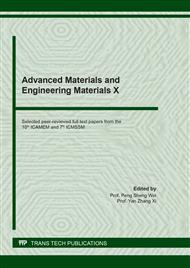p.413
p.419
p.429
p.435
p.441
p.447
p.453
p.458
p.464
Thermal Insulation Performances of Plaster Composites Based on Embedding Natural Rubber Latex Compound
Abstract:
Adding 0, 20, and 50 wt% natural-rubber latex compound into the plaster ceiling matrix affected to increase the physical-mechanical-thermal performance properties of plaster ceiling composites. Adding 50 wt% natural rubber latex compound into plaster composites can increase the superior adhesion of the nail-tensile resistance equal to 57.54 N and decrease thermal conductivity equal to 0.0634 W/m.K. In addition, adding natural rubber latex compounds into plaster composites can reduce water solubility, brittleness, impact, and cost of energy consumption due to the exterior temperature. Adequate thermal insulation for roofing, ceiling, and wall systems also reduces radiative losses that chill occupants in cold weather, and reduce interior surface temperatures in the summer, thereby optimizing the comfort of building occupants. The mechanical and thermal properties of plaster composites were investigated by using a Universal Testing Machine (UTM) and heat flow meter, respectively, measured according to TIS 1211-50, TIS 219-2522, and ASTM C518.
Info:
Periodical:
Pages:
441-446
Citation:
Online since:
November 2021
Price:
Сopyright:
© 2021 Trans Tech Publications Ltd. All Rights Reserved
Share:
Citation:


